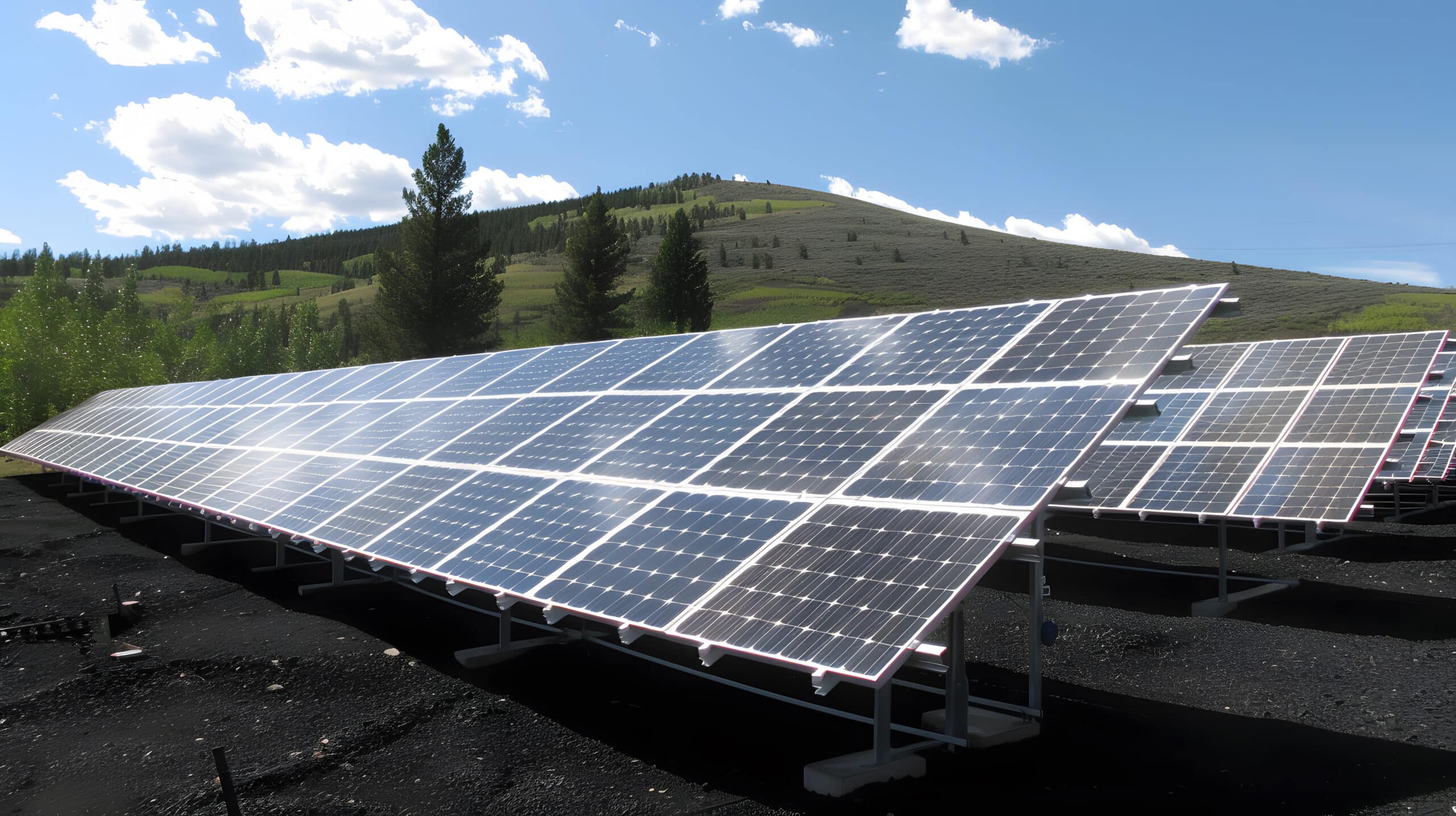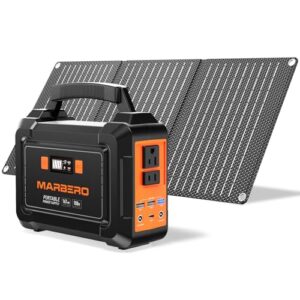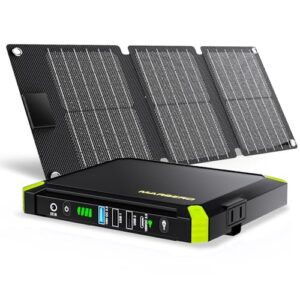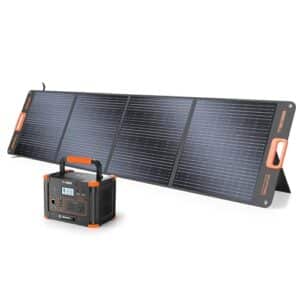How do solar generators produce electricity?
Key Takeaways
- The process of generating electricity from solar panels involves the absorption of sunlight by photovoltaic cells, creating electrical charges that generate an electric current.
- Solar generators include an inverter to convert the DC electricity produced by the solar panels into AC power, which is used to operate electrical devices and appliances.
- Solar generators can store the generated electricity in batteries for later use, providing a consistent and reliable power supply even during periods of low sunlight or at night.
Solar generators are a popular and environmentally friendly way to generate electricity. They harness the power of the sun through solar panels and convert sunlight into usable electrical energy. In this article, we will explore the process of how solar generators produce electricity and discuss their benefits and limitations.
The process of generating electricity from solar panels
The process of generating electricity from solar panels involves several steps. When sunlight shines onto the solar panels, the photovoltaic (PV) cells in the panels absorb the energy and create electrical charges. These charges then move in response to an internal electrical field in the cell, generating an electric current that can be used to power electrical devices or stored in batteries for later use.
The solar panels in a solar generator are made up of interconnected solar cells, typically made from semiconductor materials like silicon. Each solar cell consists of a top layer (N-type layer) and a bottom layer (P-type layer) made of specially treated silicon. Between these layers lies a junction called the P-N junction.
When sunlight penetrates the solar cell, it excites the electrons in the N-type layer, causing them to cross over to the P-type layer, attracted by the voltage potential created by the P-N junction. This movement of electrons creates an electric current in the external circuit connected to the solar cell, thus generating electricity.
Additional elements and layers, such as anti-reflective coatings and conductive metal contacts, are incorporated into the design of solar panels to optimize their efficiency and enhance electricity generation.
Conversion of DC to AC power
The electricity produced by the solar panels is in the form of direct current (DC) electricity. However, most appliances and devices in our homes and businesses operate on alternating current (AC) power. Therefore, solar generators include an inverter, which converts the DC electricity into AC power.
When the DC electricity is needed for powering devices or appliances, it is sent through the inverter. The inverter then converts the DC electricity into AC power, which can be used to operate various electrical devices and appliances.
Storage and utilization of electricity
In solar generators, the generated electricity can be used immediately to power devices and appliances. However, it can also be stored in batteries for later use. This allows for the utilization of solar power even during periods of low sunlight or at night when the solar panels are not actively generating electricity.
Battery storage systems in solar generators help provide a consistent and reliable power supply. The stored electricity can be used during power outages or when the demand for electricity exceeds the solar panel’s current output.
Benefits of solar generators
Solar generators have several advantages over traditional fuel-based generators:
- Environmentally friendly: Solar generators produce clean energy, reducing greenhouse gas emissions and dependence on fossil fuels.
- Easy maintenance: Solar generators have fewer moving parts compared to traditional generators, resulting in lower maintenance requirements.
- No fuel costs: Unlike gasoline or diesel generators, solar generators do not require ongoing fuel costs. They rely solely on sunlight to generate electricity.
- Stable power: Solar generators provide a stable power supply, as they are not affected by fuel availability or price fluctuations.
Limitations of solar generators
While solar generators offer numerous benefits, they also have some limitations:
- Higher upfront cost: Solar generators tend to be more expensive upfront compared to traditional generators. However, the long-term savings from reduced fuel costs can offset this initial investment.
- Dependent on sunlight: Solar generators rely on sunlight to produce electricity. They may not be as effective in areas with limited sunlight or during cloudy days.
- Limited power output: The power output of a solar generator is dependent on the size and efficiency of the solar panels. Larger power demands may require multiple solar panels or a larger solar generator system.
Conclusion
Solar generators are an innovative and sustainable solution for generating electricity. By harnessing the power of the sun through solar panels, these generators convert sunlight into usable electrical energy. They offer numerous benefits, including environmental friendliness, easy maintenance, and stable power supply. However, they also have limitations, such as higher upfront costs and dependency on sunlight. Despite these limitations, solar generators are becoming increasingly popular as the demand for clean and renewable energy sources continues to grow.
Related Websites:
FAQs:
Q: What is a solar generator and how does it work?
A solar generator is a device that uses solar panels to capture sunlight and convert it into usable electricity. It consists of solar panels, a charge controller, a battery, and an inverter. Solar panels capture sunlight and convert it into direct current (DC) electricity, which is then regulated and optimized by the charge controller. The battery stores the converted energy for later use, and the inverter converts the DC electricity from the battery into alternating current (AC) electricity.
Q: What are the advantages of using solar generators?
Using solar generators offers several benefits. Firstly, they are environmentally friendly and contribute to a reduced carbon footprint. Solar energy has a positive impact on air quality and helps reduce greenhouse gas emissions. Secondly, solar generators are versatile and portable, making them suitable for various settings and providing power in remote locations. Lastly, they can be cost-efficient in the long run, as solar energy can result in potential cost savings. Additionally, there may be financial incentives or tax benefits available for using solar energy.
Q: How does a solar generator generate electricity?
A solar generator generates electricity through a multi-step process. Firstly, solar panels capture sunlight and convert it into direct current (DC) electricity using the photovoltaic effect. The charge controller regulates and optimizes the battery charging process. The battery stores the converted energy for later use. Finally, the inverter converts the DC electricity from the battery into alternating current (AC) electricity, which can be used to power various devices and appliances.
Q: Are there any financial incentives for using solar generators?
Yes, there may be financial incentives or tax benefits available for using solar energy and solar generators. These incentives can vary depending on your location and the specific regulations in place. It is advisable to research and consult with local authorities or solar energy providers to explore any available financial incentives or tax benefits that you may qualify for.
Q: Why should I consider solar generators as a renewable energy option?
Solar generators offer several benefits as a renewable energy option. They utilize solar energy, which is sustainable and helps reduce your carbon footprint. Solar energy has a positive impact on air quality and contributes to lower greenhouse gas emissions. Additionally, solar generators are versatile and portable, providing flexibility in various settings and the ability to supply power in remote locations. Furthermore, they can potentially result in long-term cost savings, and there may be financial incentives or tax benefits available for using solar energy.






